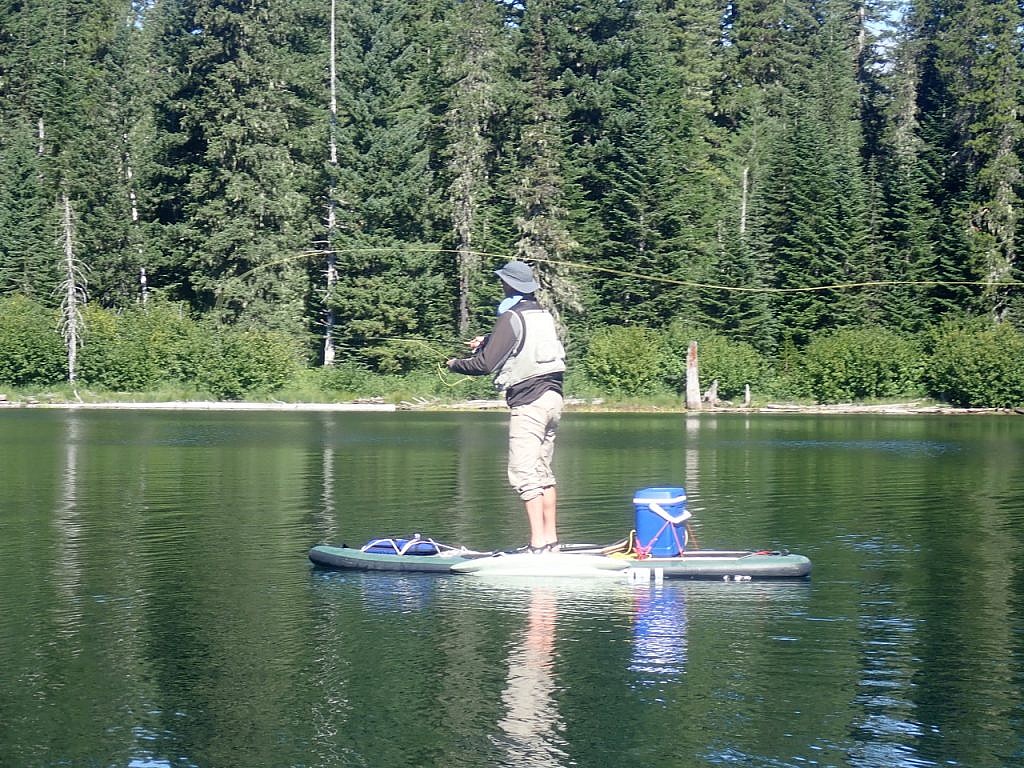
by Scott Sadil
In news I hope concerns outdoor enthusiasts of all stripes, the Columbia Basin Bulletin reported last week that Oregon Department of Fish and Wildlife staff at the Ashland Boat Inspection Station, along Interstate 5, had recently found quagga mussels on a pontoon boat being transported from Lake Mead, Nevada, into Oregon.
Quagga mussels, as I’m sure most readers already know, are one of a handful of deleterious species that have already done so much damage to native fish populations, aquatic ecosystems, food webs, and biodiversity in other parts of the country.
The breadth of devastation can be shocking. For background, I again refer everyone to Dan Egan’s The Death and Life of the Great Lakes, which follows the seemingly improbable degree of change caused in these vast inland seas by the introduction of exotic life forms, many of them brought here by freighters that collect water, for ballast, from distant ports.
Invasive species are a threat faced by watersheds across the country, although more so, perhaps, west of the Rockies, where quagga mussels, zebra mussels, various exotic weeds and algaes and fish such as carp, northern pike and other culprits haven’t yet done so much to disturb the native wildlife.

Boat inspection stations provide one line of defense. Oregon, Washington, Idaho, and Montana, for example, all spend millions of dollars each year monitoring the transport of boats across state lines. Most contaminated boats, reports CBB, come from the Great Lakes, “followed by Lake Powell, Lake Mead, and Lake Havasu,” the large reservoirs created by dams along the Colorado River.
An effective deterrent? Less than a year ago CBB reported that the Columbia River basin was the only major river basin in the U.S. still free of quagga and zebra mussels, a success due largely to the regional watercraft inspection efforts.

Unfortunately, just six months later the Idaho State Department of Agricultural reported the presence of quagga mussel larvae in the Snake River near Twin Falls, setting the stage for a “rapid response eradication treatment” that opened a lot of eyes to just how ugly this fight can turn.
In November, Idaho Fish and Game stated that they, along with help from other state agencies and regional power companies, had successfully wiped out the invasive quagga mussel larvae, using chelated copper to kill the invasive mussels, and a whole lot more, along a six-mile stretch of river.
The final tally, or toll, was shared just six weeks ago: along with the mussels, some six or seven tons of fish were found to have died during the eradication treatment.

I’ll refrain from any light-hearted “good riddance” suggested by the loss of many of these fish— invasive species in their own right—that have naturalized in the degraded aquatic environments created by the region’s feckless dams and often short-sighted irrigation practices.
And, lest anyone think the potential problems caused by quagga mussels and the like concern only anglers and other inconsequential nature lovers, rest assured the issue is bigger than that. By one estimate, if invasive mussels were to gain a foothold in the Columbia River basin, it could cost the region $600 million in damages to infrastructure, such as hydroelectric dams and irrigation and drinking water facilities—and this says nothing about the impact on game fish and threatened or endangered anadromous species.
So do your part. Scrub your boat. Clean your boots and waders. And by all means, make every effort to locate and stop at the watercraft inspection station next time you’re crossing a state line.
After all, it’s not about you.
Gray’s angling editor Scott Sadil fondly recalls a time when picking up after yourself wasn’t deemed a political statement.
